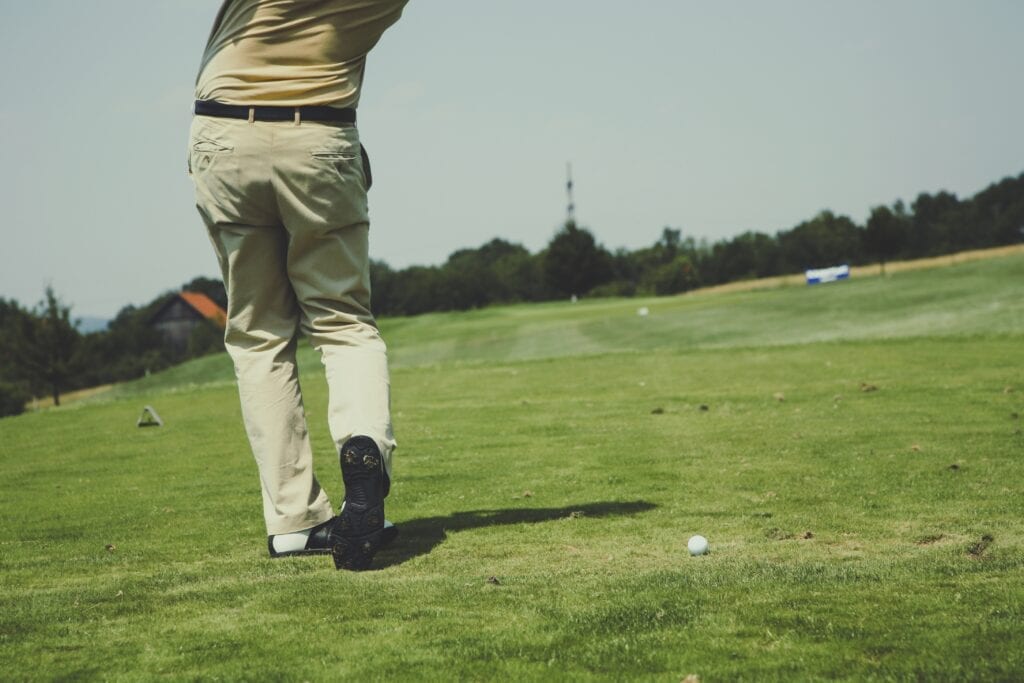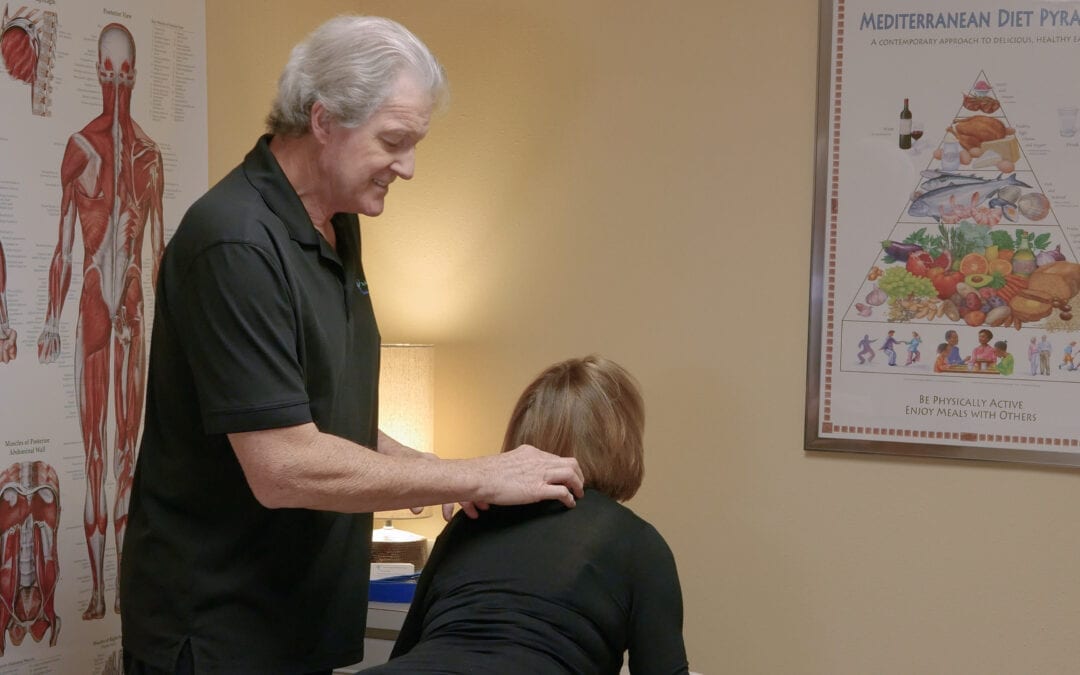Every golfer wants to improve their distance in their game, but did you know your ankles may be stopping you?
On every golf course, people placing one of their clubs behind their neck and twisting their backs. The thought here is to loosen their back before playing. There are a few reasons why this doesn’t really work!

I want to get to the ankles and their importance to your swing. First, the twisting of the back seems weird as every golf pro teaches us to rotate around our spine like an axis. There should no serious twisting of the spine. Secondly, for people who do this twisting with the club behind their heads, it is not a good golf stretch.
Ankle Flexibility is the Key
The rotation of the body is usually mistaken for the freedom of the hips. The rotations actually start at the ankles and feet. Your feet need to be soft enough to grip the ground and give you added stability. The four calf muscles, especially the inner and outer calves determine how much range your ankles have. Above the knees, the inner and outer thighs work with the calves which then allows the hips to rotate farther. Finally, the rotating muscles in the hips will determine your rotation. That seems like a lot, but all you need to know is, if my ankles are stiff, my hips will overwork and leads to a stiff low back.
Let’s begin with the four calf muscles. The inside and outside calf muscles control the inside movement and lateral movement of the foot. Each of these muscles run from above your knee down to the arch of your foot. It is important to understand to improve the distance on the ball. The bottom line here is, if you want to improve your distance in golf, you must begin with your ankles.
Start at home
If you stand barefoot and go through a practice swing, focus on the feeling of the bottom of your feet. You should feel your weight shifting through the foot from inside to out on one and vice versa on the other. This softness and flexibility in the muscles in your feet and calves are what give the ankle the flexibility to increase your range of motion. This means your clubhead speed will increase when you strike the ball.
Watch a pro golfer and look at how far the clubhead goes around his body. Now watch one of your friends and see how far the clubhead goes around their body. It is less than half the distance and in some cases, only a quarter of the distance. This means the amateur must generate2-3 times the power through their arms and shoulders to get the same distance. This usually leads to a rotator cuff tear.
How to Get There
The question is, how do you get there? Calf stretching is a very misunderstood part of the human body. You will see some people place their toes on a curb, slant board, or step to stretch their calves. Others will lean against the wall with their feet pushed away from the wall to stretch. These can be good for your Achilles Tendon, but they are not calf stretches. In fact, 98% of Americans have never stretched their calves properly, even they work with a trainer or PT. You may feel your calves with the above stretches, but you are not stretching your calves. Let me explain.
In the above-mentioned stretches, you are, at best, stretching the lower end of the 2 middle calf muscles. As a golfer, this does not help you as your motion is about twisting. With the previous stretches mentioned, no one is stretching their inner and outer calf muscles and few trainers or therapists even talk about them. Some golfers will complain of back pain and their calves are usually the problem. Short calves will force you to take shorter strides which tightens your mid-back, generating more pain throughout your back.
Stretching your Calves
So how do you stretch your calves? You can sit on the floor with your back against the wall or if you cannot get on the floor, sit in a hard-backed chair with one foot on an ottoman with your leg straight. Place a yoga strap, rope, or anything that is not stretchy around the ball of your foot. Do not use your leg muscles. Only use your arms and gently pull your toes back toward you feeling the stretch from start to finish. You should feel this behind your knee. Hold for 5 seconds and repeat 10 times. On each stretch, breathe out and allow your brain time to let go of the muscle tension.
Next, rotate your foot inward and repeat the stretch. Now you should feel it on the outside of your calf. Finally, rotate your foot to the outside and repeat the stretch. You should feel it on the inside of your calf. This is also a great stretch for Plantar Fasciitis, read about it at https://musclerepairshop.com/wp-admin/post.php?post=1609&action=edit.The reason for the 5-second hold is to avoid the stretch reflex in your muscles which will happen due to the discomfort. If you pull too hard, you will build up your arms as your legs will fight with you instead of stretching your legs.
Conclusion
Do not overwork yourself. You do not need to force your muscles to stretch. I see too many people hurt themselves because they are trying to force the stretch. Relax, enjoy, and watch the distance of your ball increase as you free your body. To see videos of the stretches go to https://www.youtube.com/musclerepairshop.com. It is a good idea to sit in a chair after your game and massage calves and feet so they are soft and pain-free. You may contact me at https://www.musclerepairshop.com.


